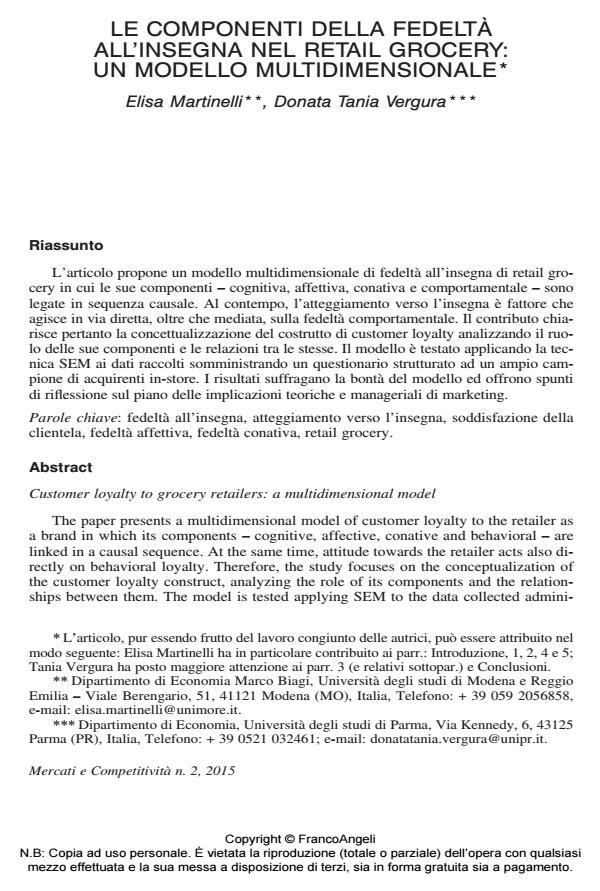Customer loyalty to grocery retailers: a multidimensional model
Journal title MERCATI & COMPETITIVITÀ
Author/s Elisa Martinelli, Donata Tania Vergura
Publishing Year 2015 Issue 2015/2
Language Italian Pages 21 P. 45-65 File size 652 KB
DOI 10.3280/MC2015-002004
DOI is like a bar code for intellectual property: to have more infomation
click here
Below, you can see the article first page
If you want to buy this article in PDF format, you can do it, following the instructions to buy download credits

FrancoAngeli is member of Publishers International Linking Association, Inc (PILA), a not-for-profit association which run the CrossRef service enabling links to and from online scholarly content.
The paper presents a multidimensional model of customer loyalty to the retailer as a brand in which its components - cognitive, affective, conative and behavioral - are linked in a causal sequence. At the same time, attitude towards the retailer acts also directly on behavioral loyalty. Therefore, the study focuses on the conceptualization of the customer loyalty construct, analyzing the role of its components and the relationships between them. The model is tested applying SEM to the data collected admini stering a structured questionnaire to a large sample of retail customers, in-store. Results confirm the model goodness and pave the way to theoretical and managerial marketing implications.
Keywords: Customer loyalty to the retailer, attitude towards the retailer, customer satisfaction, affective loyalty, conative loyalty, retail grocery
- Handbook of Research on Retailing Techniques for Optimal Consumer Engagement and Experiences Elisa Martinelli, Donata Tania Vergura, pp.33 (ISBN:9781799814122)
Elisa Martinelli, Donata Tania Vergura, Le componenti della fedeltà all’insegna nel retail grocery: un modello multidimensionale in "MERCATI & COMPETITIVITÀ" 2/2015, pp 45-65, DOI: 10.3280/MC2015-002004